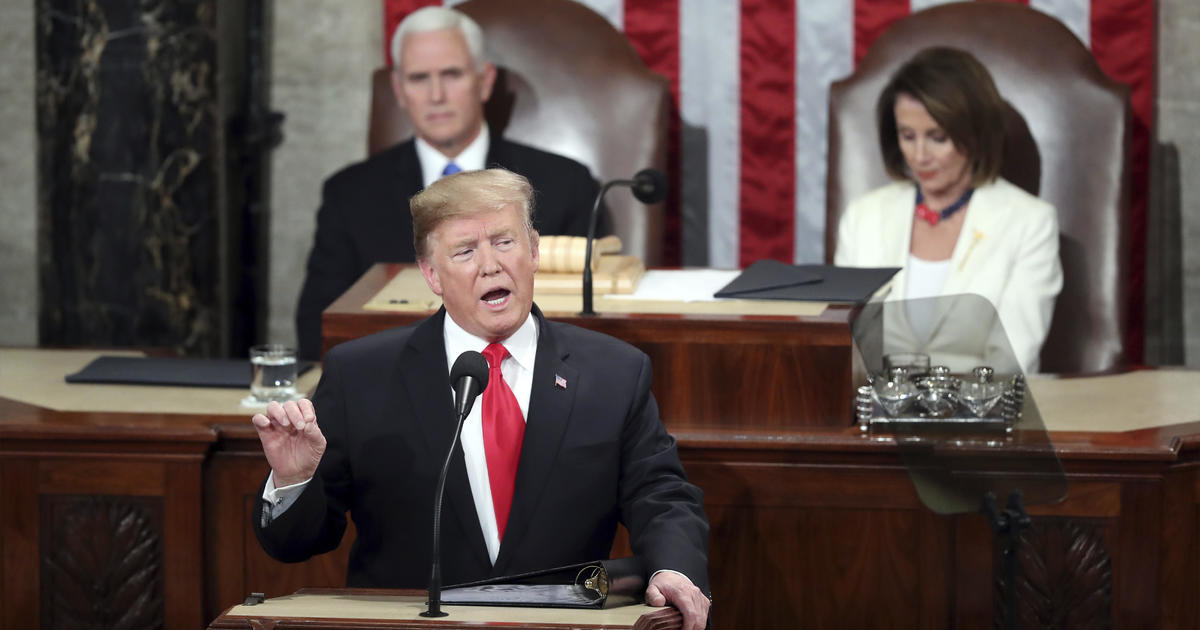
President Trump’s second State of the Union address provides an opportunity for him to make his case to Congress and the country, halfway through his term.
But it also provides ample opportunity to offer statistics and claims that need to be checked. Here are some of the claims the commander-in-chief is making Tuesday night as he addresses the country, and the facts surrounding those claims.
NATO
CLAIM: We are also getting other nations to pay their fair share. For years, the United States was being treated very unfairly by NATO — but now we have secured a $100 billion dollar increase in defense spending from NATO allies.
FACTS: This is accurate. North Atlantic Treaty Organization (NATO) Secretary General Jens Stoltenberg has said President Trump’s tough talk has ultimately strengthened the 70-year-old alliance by leading member nations to contribute tens of billions of additional dollars to ensure their own security.
In all, Stoltenberg continued, “by the end of next year, NATO allies will add hundred – 100 billion extra U.S. dollars toward defense. So we see some real money and some real results. And we see that the clear message from President Donald Trump is having an impact.”
– Kate Rydell
China tariffs
CLAIM: We recently imposed tariffs on $250 billion dollars of Chinese goods — and now our Treasury is receiving billions of dollars.
FACTS: This is somewhat misleading. Treasury is taking in billions, but China isn’t paying the tariffs: the duties are paid by importers that either swallow the cost or pass it along to consumers. In other words, it’s often U.S. consumers who have been footing the bill for tariffs.
— Irina Ivanova/Carrie Rabin
Arrests by ICE
CLAIM: In the last two years, our brave ICE officers made 266,000 arrests of criminal aliens, including those charged or convicted of nearly 100,000 assaults, 30,000 sex crimes, and 4,000 killings.
FACTS: Mostly true — the sex crimes figure stated is a few thousand higher than what ICE records show. During the Trump administration, ICE has made 274,231 criminal arrests, according to ICE’s year-end statistics. Over the course of fiscal years 2017 and 2018, ICE has arrested 99,207 individuals charged with assault, 24,020 charged with sex crimes, and 3,914 homicide charges.
– Ellee Watson
Jobs
CLAIM: In just over two years since the election, we have launched an unprecedented economic boom — a boom that has rarely been seen before. We have created 5.3 million new jobs and importantly added 600,000 new manufacturing jobs –something which almost everyone said was impossible to do, but the fact is, we are just getting started.
FACTS: Partially true. On jobs — in 2017 and 2018, the U.S. economy added 4.8 million jobs, according to the Bureau of Labor Statistics. Counting the months after the election, but before Mr. Trump took office, the figures do add up to 5.3 million. Because jobs figures are very late to respond to economic data, most economists don’t give a particular administration credit for job creation until a month or two into the term.
MANUFACTURING JOBS: A little short of true. Between January 2017 when Mr. Trump took office and January 2019, at least according to preliminary numbers for January 2019, the number of manufacturing jobs increased by 454,000. That is slightly lower than the president’s figure. It is accurate that under President Obama’s administration, the number of manufacturing jobs decreased by roughly 200,000, according to the Bureau of Labor Statistics.
– Irina Ivanova and Katiana Krawchenko
Drug prices
CLAIM: Americans pay vastly more than people in other countries for the exact same drugs, often made in the exact same place.
FACTS: This is true. According to the National Institutes of Health, per capita prescription drug spending in the U.S. does exceed that of all other countries. This is largely driven by brand-name drug price increases that far surpass the consumer price index. Per capita spending in 2013 was $858 in the U.S., compared with an average of $400 for 19 other industrialized countries. And according to U.S. Health and Human Services, prices charged by drug manufacturers to wholesalers for Medicare Part B drugs are 1.8 times higher in the U.S. than in other countries for the top drugs.
– Elizabeth Campbell
Women in the workforce
CLAIM: America has more women in the workforce than ever before.
FACTS: True, but more context is needed. The number of women working was 73.6 million as of January — higher than ever before. But the portion of women who are employed is lower than it was in the two previous economic expansions.
Today, 55.2 percent of women have a job. In September 2007, that figure was 56.8 percent. And in April 2000, 58 percent of women were employed, which is still the record high, according to the Bureau of Labor Statistics.
— Irina Ivanova
Collapse
Wage increases
CLAIM: Wages are rising at the fastest pace in decades, and growing for blue collar workers, who I promised to fight for, faster than anyone else.
FACTS: This is mostly true. Through January, average hourly wages grew 3.2 percent from a year ago, according to the Bureau of Labor Statistics. They rose an even stronger 3.4 percent for non-managers, who represent the large majority of the U.S. workforce. That represents the fastest rate of wage growth in nearly a decade (not “in decades”), and is a sign that the economic expansion is finally reaching lower-paid and lower-skilled workers. But it’s far lower than the pay growth seen in prior economic recoveries. At the peak of the previous two economic expansions, in 2000 and 2007, average workers’ wages grew between 4 and 4.5 percent annually.
— Irina Ivanova/Carrie Rabin
Energy production
CLAIM: The United States is now the #1 producer of oil and natural gas in the world.
FACTS: This is accurate. According to the U.S. Energy Information Administration’s Short-Term Energy Outlook from September, the United States became the number one crude oil producer in the world last year. U.S. crude oil production exceeded that of Saudi Arabia for the first time in more than two decades in February 2018, and surpassed Russia in June and August 2018 for the first time since February 1999. The U.S. surpassed Saudi Arabia to become the top petroleum producer in 2013, and has continued to hold to that trend. The United States has been the number one producer of natural gas since 2009, when it surpassed Russia to claim the top rank.
— Sara Cook

